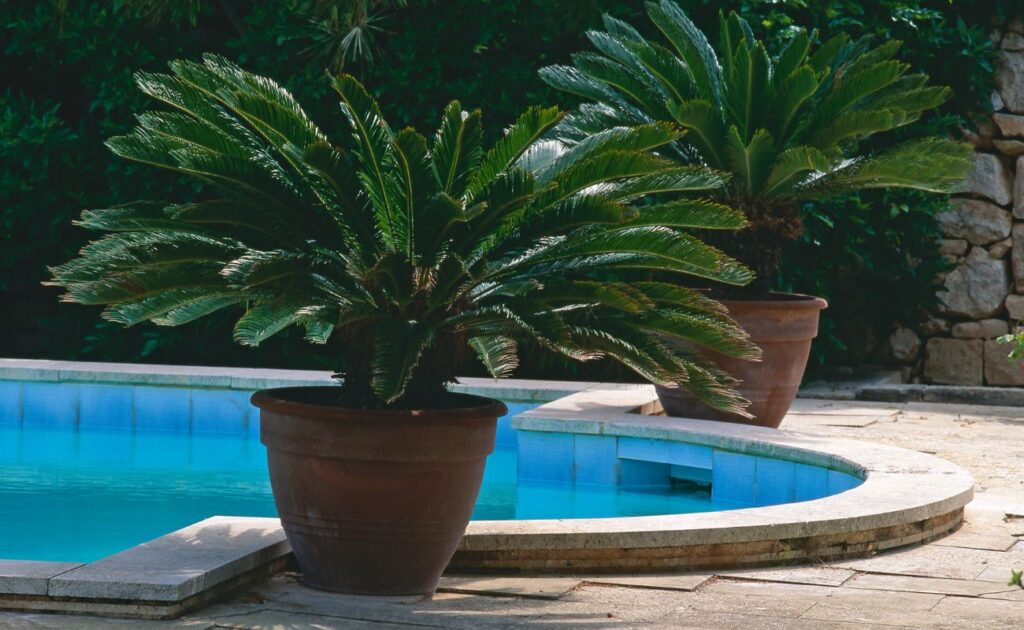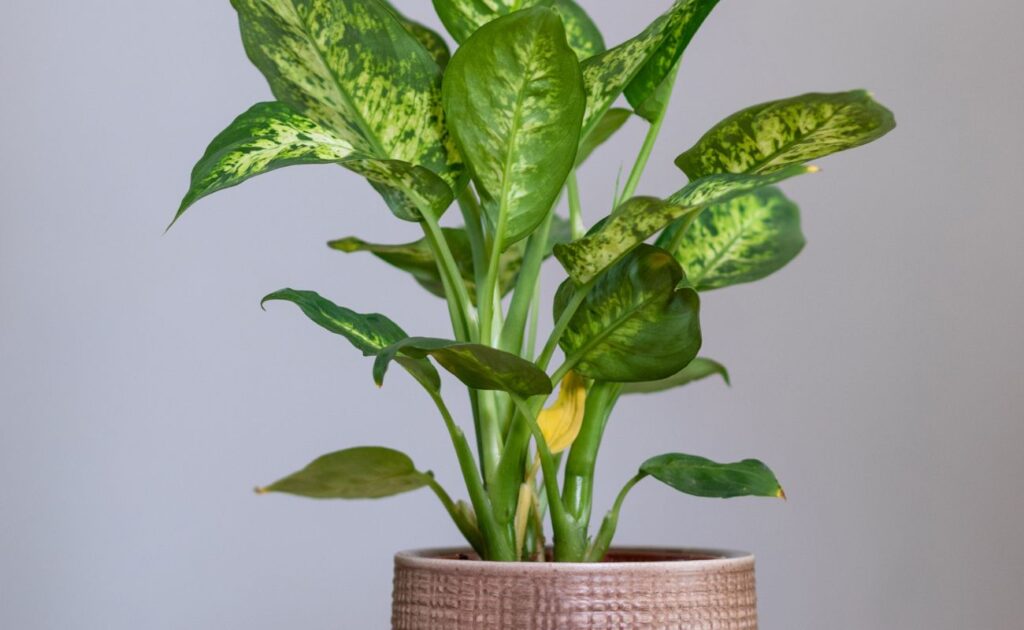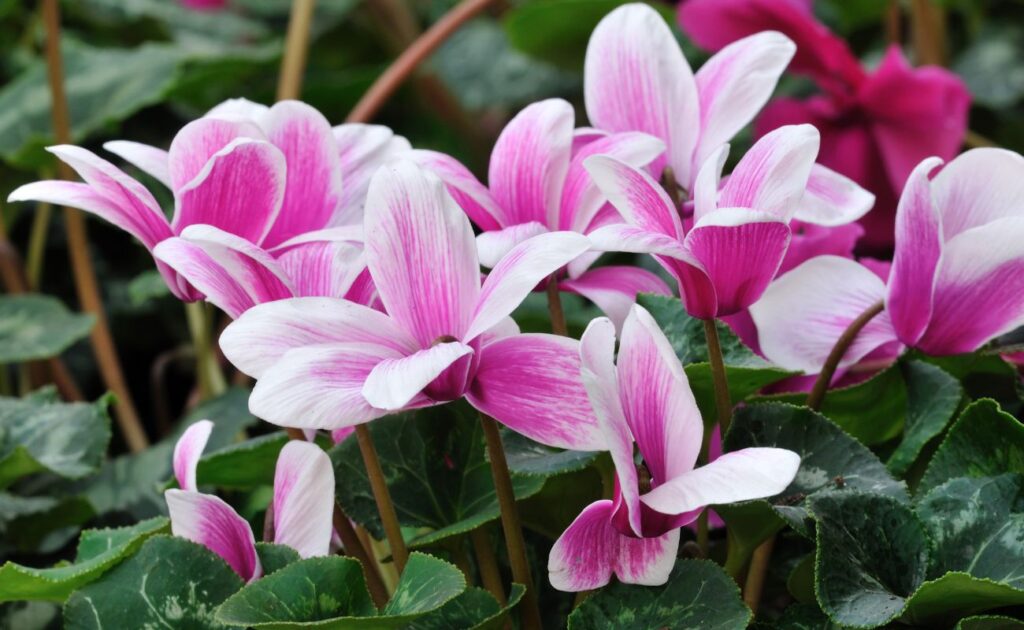Disclosure: Some links on this site are affiliate links. As Amazon Associates, we earn from qualifying purchases (at no cost to you).
Many common household plants can be toxic to pets, causing a range of health issues from mild irritation to severe poisoning. As pet owners, it’s crucial to be aware of these plants and keep them out of reach.
Here are 10 toxic plants for pets, each thoroughly described to help you keep your furry friends safe.
10 Toxic House Plants For Pets
1. Lilies
Lilies are extremely toxic to cats and moderately toxic to dogs. All parts of the lily plant, including the petals, leaves, and pollen, can cause severe kidney failure in cats.

Symptoms of lily poisoning include vomiting, lethargy, and loss of appetite. If you suspect your cat has ingested any part of a lily, seek veterinary care immediately.
2. Oleander
Oleander is a highly toxic plant for both dogs and cats. Ingesting even a small amount can cause severe symptoms such as vomiting, diarrhea, abnormal heart function, and even death.

The plant contains cardiac glycosides, which can interfere with the heart’s ability to pump blood. It’s crucial to remove oleander from your home and garden if you have pets.
3. Sago Palm
The sago palm is a popular ornamental plant, but it’s highly toxic to pets. All parts of the plant, especially the seeds, contain cycasin, a toxin that can cause liver failure.

Symptoms of sago palm poisoning include vomiting, diarrhea, seizures, and liver failure. Immediate veterinary attention is necessary if ingestion is suspected.
4. Azaleas and Rhododendrons
Azaleas and rhododendrons contain grayanotoxins, which are toxic to both dogs and cats. Ingestion can cause vomiting, drooling, diarrhea, and in severe cases, heart arrhythmias, and coma.

Even small amounts can be dangerous, so it’s best to avoid planting these shrubs in areas accessible to pets.
5. Philodendrons
Philodendrons are common houseplants that are toxic to pets. They contain calcium oxalate crystals, which can cause irritation and swelling of the mouth, tongue, and throat.

Symptoms include drooling, vomiting, and difficulty swallowing. While not usually fatal, ingestion can be very uncomfortable for pets.
6. Tulips
Tulips contain toxins called tulipalin A and B, which are harmful to pets. The highest concentration of these toxins is found in the bulbs, but all parts of the plant can cause symptoms.

These include vomiting, diarrhea, drooling, and in severe cases, heart problems and difficulty breathing. It’s important to keep tulips out of reach of pets.
7. Aloe Vera
While aloe vera is known for its healing properties for humans, it’s toxic to pets. The plant contains saponins and anthraquinones, which can cause vomiting, diarrhea, lethargy, and tremors in pets.

If you have aloe vera plants, ensure they are placed in areas inaccessible to your pets.
8. Dieffenbachia (Dumb Cane)
Dieffenbachia, also known as dumb cane, contains insoluble calcium oxalates, which are toxic to pets. Ingestion can cause oral irritation, intense burning and swelling of the mouth, tongue, and lips, excessive drooling, vomiting, and difficulty swallowing.

Severe cases can lead to breathing difficulties and death.
9. Cyclamen
Cyclamen is a popular flowering plant that is highly toxic to pets. The tubers, located at the root, are especially dangerous and contain high levels of saponins.

Symptoms of cyclamen poisoning include severe vomiting, drooling, diarrhea, heart abnormalities, and seizures. Ingesting large amounts can be fatal.
10. Jade Plant (Crassula Ovata)
Jade plants, also known as Crassula ovata, are common succulents that are toxic to pets. Ingestion can cause symptoms such as vomiting, lethargy, incoordination, and depression.

While the toxicity level is generally low, it’s best to keep jade plants out of reach to prevent any adverse reactions.
Safe Plants for Pets
If you’re looking to add greenery to your home but want to ensure your pets stay safe, consider these pet-friendly plants:
- Spider Plant: Non-toxic and easy to care for, spider plants are a great choice for pet owners.
- Areca Palm: This tropical plant is safe for both dogs and cats and adds a beautiful touch to any room.
- Boston Fern: A non-toxic plant that thrives in indirect light and humid environments.
- Bamboo Palm: Safe for pets and excellent for purifying the air.
- Orchid: Beautiful and non-toxic, orchids are a safe option for households with pets.
FAQ
Q: What should I do if my pet ingests a toxic plant? A: If you suspect your pet has ingested a toxic plant, contact your veterinarian immediately. Provide them with details about the plant and your pet’s symptoms.
Q: Are all parts of the plant toxic to pets? A: It varies by plant. Some plants are toxic in all parts, while others may have more concentrated toxins in specific areas like the bulbs, leaves, or seeds.
Q: Can toxic plants cause long-term health issues in pets? A: Yes, depending on the plant and the amount ingested, some toxic plants can cause long-term health issues or even be fatal. Immediate veterinary care is crucial.
Q: How can I prevent my pet from ingesting toxic plants? A: Keep toxic plants out of reach of pets, or choose pet-safe plants for your home and garden. Training your pet to avoid certain areas and providing plenty of pet-safe toys and distractions can also help.
Q: Are there any common household items that can neutralize plant toxins? A: No household items can neutralize plant toxins effectively. Always seek professional veterinary care if your pet ingests a toxic plant.
Q: Are there any symptoms that are common across different plant poisonings? A: Common symptoms include vomiting, diarrhea, drooling, lethargy, and difficulty breathing. However, symptoms can vary widely depending on the plant and the amount ingested.
Final Thoughts
Being aware of toxic plants and keeping them out of your home and garden is crucial for the safety of your pets. If you love greenery, consider opting for pet-safe plants that add beauty to your space without posing a risk to your furry friends.
Regularly check the plants in your environment and educate yourself on their potential risks. By taking these precautions, you can ensure a safe and healthy environment for your beloved pets.


